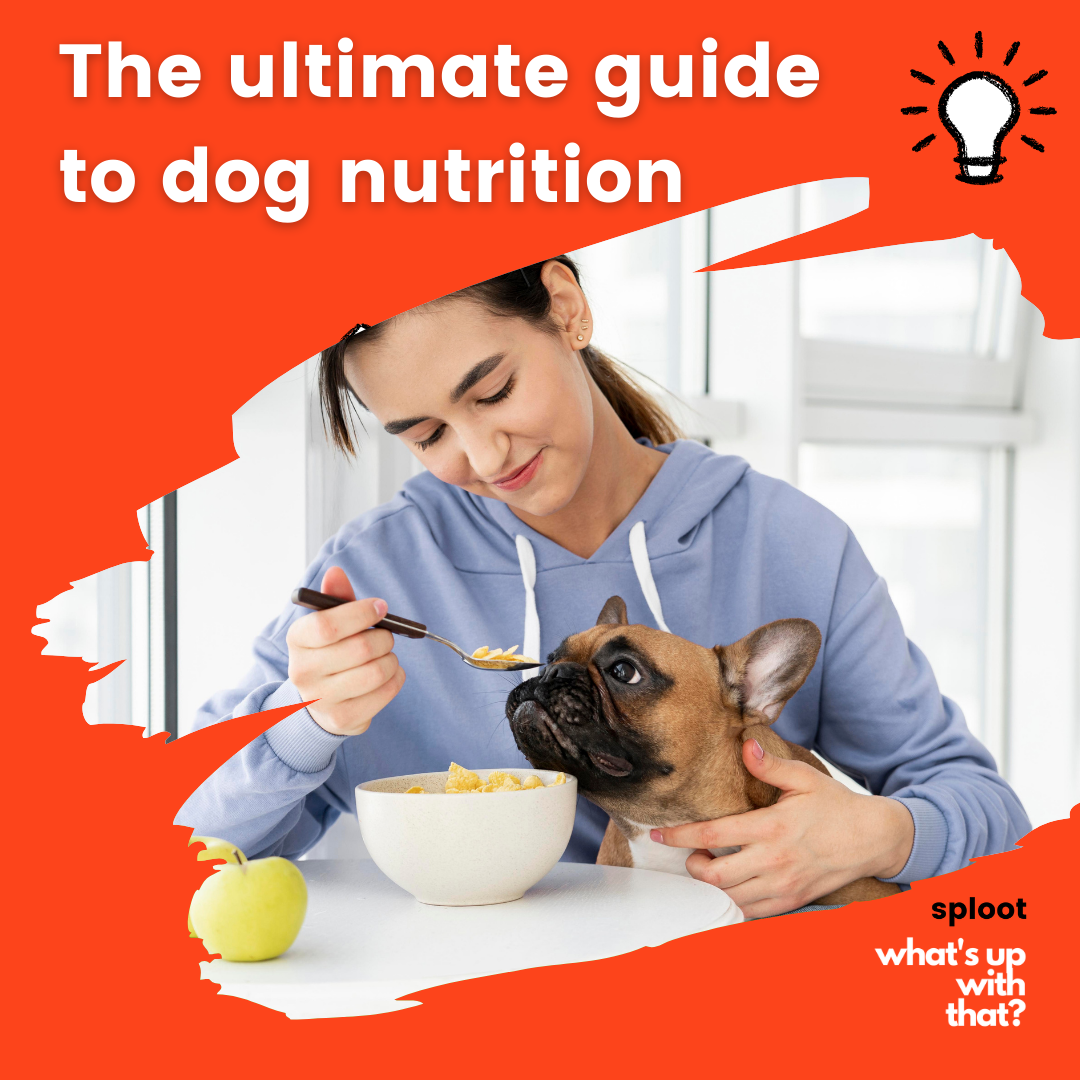The ultimate guide to dog nutrition

Finding the right diet for your dog can be tricky. There are a lot of factors that you’ll have to look into. These include your dog’s size, weight, breed, age, activity level, and health condition. But as a general rule, there are a few nutrients that should definitely be present in your dog’s diet. These are:
- Proteins – 18% of their diet
- Fats – 5% of their diet
- Minerals – will depend on your dog’s needs
- Vitamins – will depend on your dog’s needs
- Water – to keep him hydrated
To know the importance of all these nutrients, and their sources i.e. the foods you can get them from, click here.
A balanced diet for your dog
Now that you know which nutrients are essential for your dog, the next step is to give him a balanced diet. An appropriate diet will look something like this:
- Good quality protein (mainly from meat, fish, meat, lentils, eggs)
- Moderate level of fat (fish oil, or plant based oil like flaxseed)
- High level of Omega-3
- Vitamins and minerals (from veggies)
- Good water intake
You can also add some supplements to your dog’s diet, which can include probiotics (for digestive health), collagen (for joints), krill oil (for skin and coat), MCT oil (for cognitive health).
What should be in a puppy’s meal?
A puppy should be with the mother dog till it is 8 weeks old. He will get all the required nutrients from his mother itself.
Thereafter, his diet should have a lot of protein and fats as compared to an adult dog. Also, puppies should be fed small amounts of food frequently. When he grows up, the frequency decreases, and the amount of food increases.
They should be fed 3-4 times a day.
What should be in an adult dog’s meal?
What you feed an adult dog will also depend on his activity level. To calculate how many calories your dog will need, you can use a simple formula that is
Body weight (in kgs) X 30 + 70
Now, a dog who gets little exercise will need 10% lesser calories, and a dog who is hyperactive will need 30 to 40% more calories than the calculated one.
An adult dog should be fed 2 times a day.
What should be in a senior dog’s meal?
Senior dogs need less protein in their diet. Even this protein should be easily digestible by the body. Otherwise, it may affect their renal structure, thus affecting the kidneys.
They should also be fed less amount of food since their physical activity is very limited.
They should also be fed two times a day.
Types of dog food that you can consider
1. Kibble
Dry food (or kibble) is one of the easiest food options for your dog. It is easy to store and there is no hassle in preparation as well. But since it is processed, it’s not that good for a longer-term.
While choosing kibble, make sure that it has a good amount of animal protein, Limited ingredients, and less grains/fillers.
2. Wet food
Dogs love wet (canned) food. It also has a bigger shelf life. At times, when your dog is not drinking enough water, canned food can come to the rescue.
However, it has a larger percentage of water which means only a large quantity of the canned food can compensate for the nutrients required by your dog.
3. Home-cooked food
Making a complete meal for your dog can be a big task. but at the same time, it will give you peace of mind since you can consciously select what you want to feed your dog.
You will have to be very careful that you include every important nutrient in the meals that you are preparing.
4. Raw food
A raw diet will include uncooked meat, bones, organs, etc. It is naturally easy for dogs to consume this type of diet. However, before switching to a raw diet, you must consult your vet.
We know that’s a lot of information and making decisions for your dog’s food can be a little difficult if you are no nutritionist. We have curated nutrition plans keeping a dog’s needs in mind. To give him the healthy and balanced diet that he deserves, check out our plans right away!